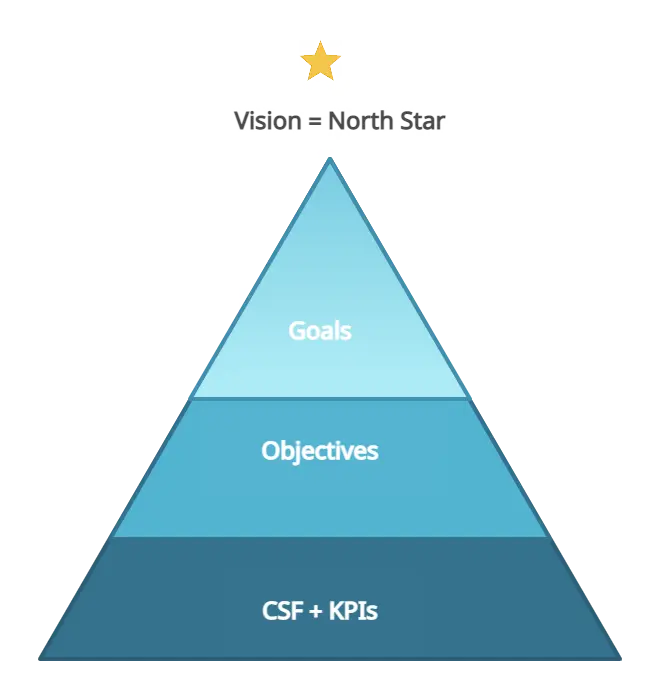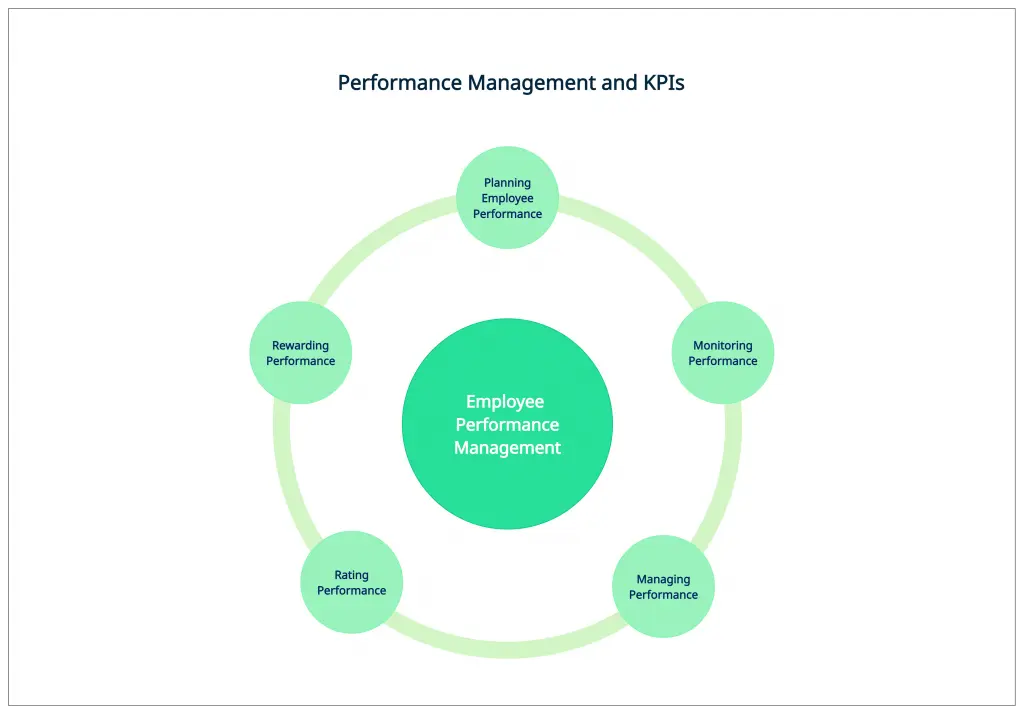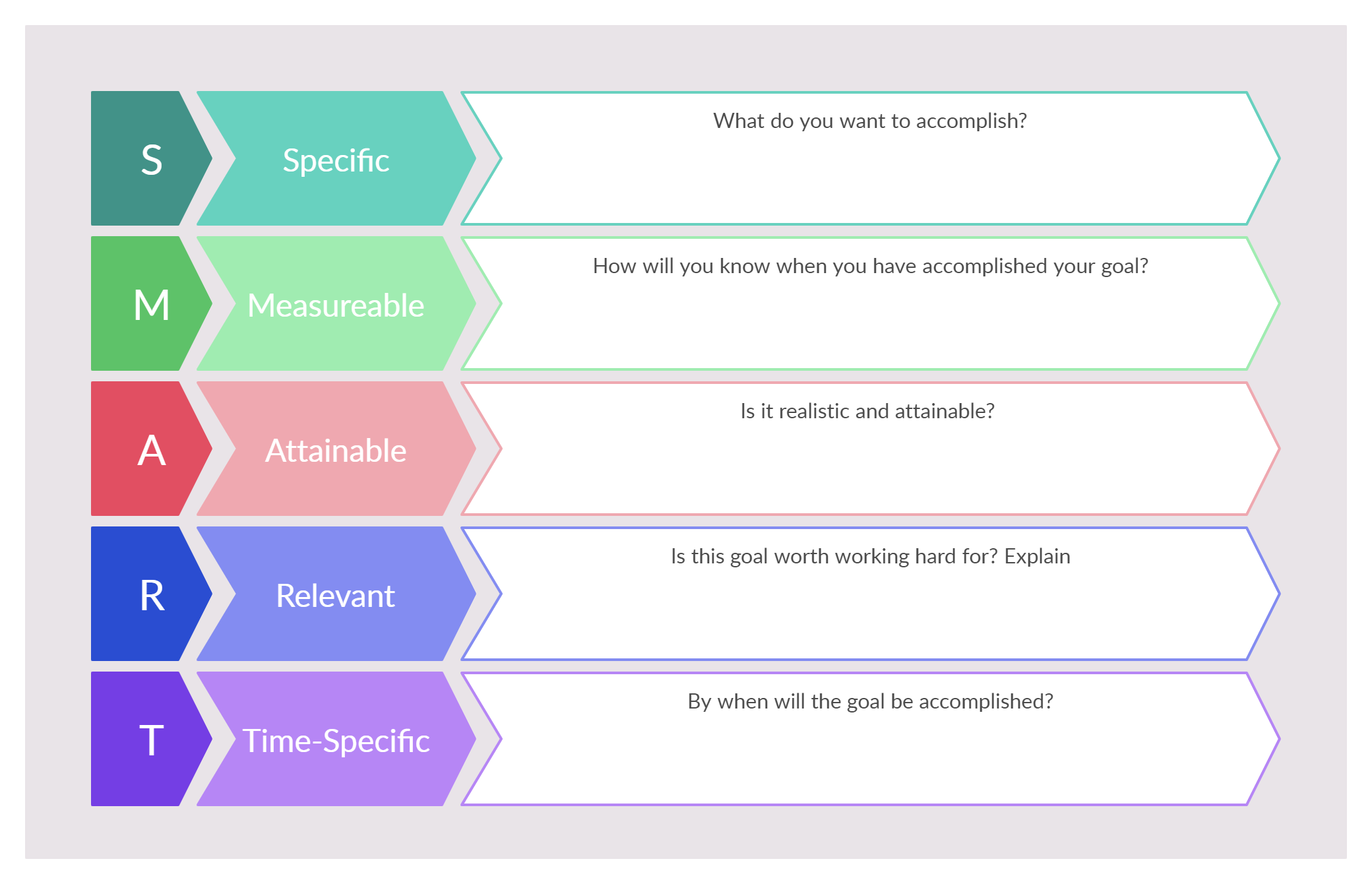An organization without key performance indicators (KPIs) is like a journey without a map. When your journey doesn’t have a map, there is no way for you to determine how far you have come since you started. You keep on driving towards a destination without any knowledge of what is in your way. In an organization, having clear KPIs that are linked to your company’s ultimate goals help derive the progress you have made within a set time frame. It helps understand the contributions of team members and what needs to improve.
Scroll down to learn:
- What is a KPI?
- Why are KPIs important?
- How Do KPIs Fit into an Organizational Structure?
- KPIs in Project Management
- KPIs for Teams and Individuals
- KPIs and Employee Performance
- How to Set KPIs
What is a KPI?
Key Performance Indicators (KPIs) allows you to obtain quantifiable measurements over time to accomplish a specific goal (or objective). KPIs drive teams towards achieving targets, provide metrics to measure the progress of targets, and ultimately offer valuable insights to make informed decisions on operations management or business processes. The KPI process helps every aspect of a business – be it finance, HR, customer service or marketing – to be efficient and effective in fulfilling its responsibilities.
Why are KPIs important?
As mentioned above, KPIs are essential to identify the contributions of your team members towards overall business goals. Here are some notable reasons why you should implement a KPI process in your organization.
To ensure your teams are accountable and aligned towards goals. This is especially important when monitoring the progress of a particular project. A clearly defined KPI process ensures that team members acknowledge their responsibilities and are making collective efforts towards fulfilling them.
To keep track of the company’s health score. Key performance indicators undoubtedly provide valuable insights into an organization’s operations. While they offer a comprehensive understanding of prevalent financial performance, they also shed light on potential risk factors such as shortages in the capital, new competitors, or knowledge gaps.
To monitor progress over time. KPIs allow you to set goals at the beginning of the financial year and utilize monthly or quarterly reports to measure the progress made by tracking key criteria such as revenue, cost per transaction, customer satisfaction rate and so on. Since KPIs are aligned with organizational targets, this will also assist to track the progress towards a company’s long term goals and strategies.
To make improvements when and where necessary. Once KPI results are analyzed, they allow you to concentrate on which areas of the business need improvement and whether any adjustments should be made to the current course of action. This will save you from making the wrong decisions and predict future scenarios. Since KPIs are measurable, you can directly influence the factors that determine their results and take preventative actions to ensure that you are on track to achieve your goals.
How Do KPIs Fit into an Organizational Structure?
KPIs are an important part of an organizational structure, especially in aligning individual and team goals with the organization’s overall strategy and objectives. KPIs provide a framework for measuring progress, monitoring performance, and identifying areas for improvement across different levels of the organization. They help to ensure that the department and individual goals are aligned with the organization’s overall strategy. Furthermore, KPIs can be used to manage performance and drive continuous improvement.
The below image shows how the KPIs fit into the organizational flow or structure. The company can first decide its vision or what it considers to be its ‘north start’. Once the vision is determined, the organization can list what it hopes to accomplish (goals) and how the product or service can help achieve them. The KPIs are then the indicators that signal successful outcomes. Coupled with the KPIs, the organization must look at the critical success factors required.

KPIs in Project Management
KPIs are used as metrics in project management to measure progress toward achieving project goals and objectives. KPIs in project management are used to monitor the performance of the project team, identify potential risks or issues, and make data-driven decisions to keep the project on track.
KPIs in project management can be broadly categorized into the following areas.
- Time: Time-related KPIs measure progress against the project timeline, including project duration, completion dates, and critical path analysis.
- Cost: Cost-related KPIs track project expenses against the budget and include metrics such as planned versus actual project costs, earned value, and cost variance.
- Quality: Quality-related KPIs measure project deliverable quality, including defect density, error rate, and customer satisfaction.
- Scope: Scope-related KPIs measure project work and include metrics such as scope creep, change requests, and requirements volatility.
KPIs for Teams and Individuals
Team KPIs
Team KPIs can be used to evaluate the effectiveness of a team’s performance. Team KPIs can help to identify areas for improvement and facilitate data-driven decision-making. By setting clear performance metrics and tracking progress over time, team leaders can motivate team members to work towards common goals and achieve better outcomes.
Teams can use KPIs may vary depending on the nature of the team’s work. Some common examples of team KPIs include:
- Team productivity: measures the team’s output over a given period of time, such as the number of tasks completed, projects delivered, or products manufactured.
- Customer satisfaction: measures the team’s ability to meet customer needs and expectations, as reflected in customer feedback or surveys.
- Quality of work: measures the team’s ability to produce high-quality work, which can be seen through the number of errors in the team’s output.
- Collaboration: measures the team’s ability to work together effectively. Communication frequency, problem-solving skills, or teamwork assessments can be used to assess this KPI.
- Time management: measures the team’s ability to manage their time effectively. Are they achieving meeting deadlines or completing tasks within a given timeframe?
- Employee engagement: measures the team’s engagement and satisfaction with their work. This looks into employee turnover, job satisfaction surveys, or employee feedback.
Individual KPIs
Individual KPIs, also known as personal performance metrics or individual performance goals, focus on setting up specific, measurable targets used to evaluate an individual employee’s performance within an organization. They help managers and employees to set clear expectations, monitor progress, and provide feedback for performance improvement. Employees can understand how their contributions impact the organization’s success by aligning individual KPIs with the organization’s overall goals and objectives.
Here are a few examples of individual KPIs.
- Sales targets: measures an individual’s ability to meet or exceed sales targets within a given period of time, such as monthly or quarterly sales goals.
- Customer satisfaction: measures an individual’s ability to meet customer needs and expectations.
- Quality of work: measures an individual’s ability to produce high-quality work.
- Timeliness: measures an individual’s ability to complete tasks or projects within a given timeframe.
- Attendance: measures an individual’s attendance and punctuality.
- Professional development: measures an individual’s commitment to their professional development.
KPIs and Employee Performance
Employee performance is at the heart of organizational success. Whether an organization’s journey is successful or not, depends on how driven its employees are in reaching its milestones. In order to achieve organizational goals, we first need to set targets at individual and team levels so that they can be linked to that of the company.
Employees are the greatest asset of a company. They need to be encouraged, empowered, and assessed in view of accomplishing business goals. It is vital to pay attention to an employee’s positive and negative behaviours, discuss and give feedback to create an enabling environment for them to learn and improve. This will also align them to work towards team and organizational goals.
How do you measure performance? What quantifiable data can you present as proof of your team’s hard work? Are all team members working on the right goals? And does their work contribute to achieving the ultimate company objectives?
This is where KPIs come into the limelight. KPIs are a form of quantifiable targets that help you to track the progress of your business goals. They will help you to comprehend how the performance of your team members contributes to it. Moreover, KPIs will also support in identifying knowledge gaps and allow you to implement qualitative training plans accordingly.

How Can KPIs be Used for Recognition and Appraisal
KPIs can be used for recognition and appraisal by linking individual or team performance against specific, measurable targets or goals. Organizations can ensure that employees are on board with the business’s overall strategy and collaborate to achieve shared objectives by creating clear expectations and tracking success against these benchmarks. Here are some ways in which KPIs can be used for recognition and appraisal:
- KPIs provide regular feedback on performance, highlighting strengths and areas for improvement and keeping employees motivated and engaged.
- KPIs are used for performance appraisals, providing objective data to assess progress against targets and identifying areas where support or development is needed.
- KPIs can be used for recognition and rewards, linking bonuses or promotions to specific performance targets or goals, motivating employees, and acknowledging their contributions.
- KPIs can identify areas for career development and growth, helping managers create development plans that focus on building skills and knowledge in alignment with organizational goals.
How to Set KPIs
Step 01 – Determine how KPIs will be used
The first step in setting KPIs is to understand how these performance indicators will be used to monitor progress. Before setting KPIs for teams, gather the members and discuss what criteria should be used to determine their KPIs and how these will impact their performance.
KPIs are simply a form of communication, and like any communication framework, KPIs too should be clearly understood by the people they are assigned to so that they can be acted upon. Make sure your team members are data literate and equipped with the right knowledge, tools and skills to make the right decisions based on the data they work with.
Step 02 – Link KPIs to organizational goals
Companies often make the mistake of adopting vague KPIs that don’t reflect their business processes and thus fail to see any substantial impact. Your KPIs should be linked to organizational goals so that you know that the company is on the right track. For instance, companies may define their development strategies under the perspectives of finance, internal business processes, learning and growth, and customer. Accordingly, the KPIs that you set too should fall under these categories.
For instance, company ABC may set a goal under the learning and growth aspect to provide soft skills training to its employees within a budget of 6 million. Here, the Human Resources Manager and his/her team would be chief custodians of achieving this target. Hence, to align with this goal, they could have a KPI to conduct six soft skills training workshops per quarter (24 workshops per year) while maintaining their expenses under the set budget.
Another key aspect of the KPI process is to ensure that your team understands the ultimate goals of the organization and the plan of action that should be followed to achieve them. This will empower your workforce with a purpose to fulfil their responsibilities.
Step 03 – Are your KPIs SMART?
Use the SMART formula to determine how effective your KPIs are.
Specific – The KPI you set should be focused on a specific aspect of your business that can be measurable, and determine why it is important.
Measurable – As mentioned above, it should be measurable and benchmarked against a defined standard.
Achievable – The KPI should be deliverable.
Relevant – It should be relevant to a business process within the company while being linked to the organization’s strategic objectives.
Time-Bound – The KPI should be achievable in a set time frame.

Step 04 – Audit KPIs when necessary and make changes
Businesses diversify or change their existing processes depending on market conditions. When this happens you may need to revise the previously set KPIs and establish new indicators which would align with the new goals. Hence, it is important to audit KPIs annually and make changes where necessary – so you are certain that KPIs are aligned with changed directives of the business. Use the below template to audit your KPIs.

Let KPIs Guide You Towards Success
Key performance indicators significantly contribute to driving a business to achieve its goals. In today’s competitive and complex business environment, it is becoming increasingly important to have defined business goals and a clear plan of action on how to achieve them. As such, KPIs can be your guiding light to determine the direction of your journey and your progress.
FAQs About KPIs
What are some common mistakes to avoid when setting KPIs for team members?
- Setting too many KPIs
- Setting KPIs that are not relevant to the team’s work
- Setting unrealistic targets
- Failing to involve team members in the KPI-setting process





